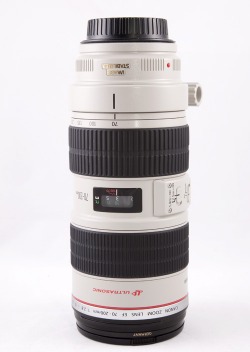
I have used the Canon 100-400 f/4.5-5.6 IS, but I hated the push-pull zoom that acted like a pump sucking dust onto the camera sensor each time I used the zoom. While the 100-400 possessed IS, it was a great deal slower than the 70-200. Perhaps surprisingly, the 70-200 is slightly heavier and with the 2X extender factored in, does mean you are carrying a more weight than the 100-400.
What about if you use a crop camera? The 70 - 200 will work just fine providing you don't mind the cropped view. Jan, who shoots a 1.6 crop camera, really only uses one lens in Alaska - a Canon 70-300IS DO lens. This lens doesn't get a lot of respect, but its relatively compact size and zoom range has made it an ideal travel companion. With an aperture of 4.5 - 5.6 it's not fast, and 300mm on a crop camera seems closer to 500mm making it a lens Jan has to brace or crank up the ISO in dim conditions. Still, even with these disadvantages, Jan is able to create images that sell quite nicely on iStockPhoto.
We are often asked if a lens longer than 400mm should be taken to Alaska and the answer is "no", unless you are doing the Alaskan land tour on your own. If you are on a cruise tour, you are going to find yourself in a vehicle looking out at wildlife as many won't let you out of the bus or van in the presence of wildlife. Inside the cramped quarters of a tour vehicle, there is just not enough swinging room to bring a Canon 500mm to bear on a distant mountain goat. You really need to be on your own where you can setup your large lens away from the madding crowd. So, a general rule of thumb - the more people you are travelling with, the less chance there is of using a long lens.

 RSS Feed
RSS Feed
